
Millions of people deal with headaches and migraines every day. These painful episodes can make it hard to work, sleep, or enjoy life. Many people look for natural ways to feel better without always taking medicine.
Yoga offers a gentle and effective way to reduce headache and migraine pain through simple poses, breathing exercises, and relaxation techniques. Research shows that regular yoga practice can help lower how often migraines happen and make them less painful. The practice works by calming the nervous system and reducing stress in the body.
Learning the right yoga poses and breathing methods can give people a powerful tool to manage their pain. Simple movements and stretches can ease tension in the neck, shoulders, and head where pain often starts. With practice, these techniques become easier to use whenever a headache begins.
Key Takeaways
- Yoga helps reduce headache and migraine pain naturally through gentle movement and relaxation
- Regular yoga practice can lower how often migraines occur and make them less intense
- Simple poses and breathing exercises target tension in areas where headaches commonly start
How Yoga Eases Headaches and Migraine Symptoms
Yoga works by calming the nervous system and reducing muscle tension that often triggers headaches and migraines. The practice combines gentle movements with deep breathing to help manage pain and prevent future episodes.
Understanding Migraine and Headache Pain
Migraine is a severe type of headache that affects millions of people. It causes intense pain on one side of the head that can last for hours or days.
Common migraine symptoms include:
- Throbbing or pulsing pain
- Nausea and vomiting
- Sensitivity to light and sound
- Visual changes or aura
Headaches often start when the sympathetic nervous system becomes overactive. This happens during times of stress or tension. The body releases stress hormones that can trigger pain signals in the brain.
Muscle tension in the neck and shoulders also plays a big role. When these muscles stay tight for long periods, they can create tension headaches. Poor posture and stress make this problem worse.
The pain occurs when blood vessels in the head change size. They may expand or contract in response to triggers like stress, certain foods, or hormonal changes.
Benefits of Yoga for Migraine Management
Yoga helps reduce headache frequency and intensity in several important ways. Regular practice can lower stress levels, which is one of the main triggers for migraines.
The practice activates the parasympathetic nervous system. This is the body’s “rest and digest” mode that helps people feel calm and relaxed. When this system is active, it counters the effects of stress.
Key benefits include:
- Reduced muscle tension in neck and shoulders
- Better blood flow to the brain
- Lower stress hormone levels
- Improved sleep quality
- Better pain management skills
Studies show that people who add yoga to their treatment plan have fewer headaches. They also report less severe pain when headaches do occur.
Yoga helps people become more aware of their body signals. This awareness can help them notice early warning signs of a migraine before it gets worse.
Types of Yoga Recommended for Relief
Different types of yoga offer specific benefits for headache relief. Hatha yoga is ideal for beginners because it uses slow, gentle movements that don’t strain the body.
Restorative yoga focuses on deep relaxation using props like bolsters and blankets. This style helps calm the nervous system and reduce tension. Sessions often last longer and use fewer poses.
Yoga therapy combines traditional poses with breathing exercises designed for specific health conditions. A trained instructor can create a personalized program for migraine management.
Gentle flow styles work well for people who want more movement. These classes link breath with slow, fluid movements that don’t trigger headaches.
Hot yoga or intense styles should be avoided during migraine episodes. The heat and vigorous movement can make symptoms worse for many people.
The best approach is to start slowly and listen to the body’s signals. What works for one person may not work for another.
Role of Deep Breathing and Meditation
Deep breathing is one of the most powerful tools for headache relief. Taking slow, deep breaths helps activate the body’s relaxation response quickly.
When people take deep breaths, they send signals to the brain to calm down. This reduces the production of stress hormones that can trigger migraines.
Effective breathing techniques include:
- Counting breaths (inhale for 4, hold for 4, exhale for 6)
- Alternate nostril breathing
- Belly breathing focusing on the diaphragm
Meditation during yoga practice helps people manage pain better. It teaches the mind to focus on something other than the discomfort.
Regular meditation can change how the brain processes pain signals. People who meditate often report that headaches feel less intense and don’t last as long.
Even five minutes of focused breathing can help during a migraine attack. The key is to practice these techniques regularly, not just when pain strikes.
Best Yoga Poses and Practices for Headache and Migraine Relief
These specific yoga poses help reduce migraine pain by releasing muscle tension, calming the nervous system, and promoting deep relaxation. Each posture targets different areas where headache tension builds up most.
Child’s Pose (Balasana) for Soothing Tension

Child’s pose is one of the most effective yoga poses for migraine relief. This gentle posture helps calm the mind while releasing tension in the neck and shoulders.
To practice balasana, a person kneels on the floor and sits back on their heels. They then fold forward, bringing their forehead to the ground and extending their arms in front of them.
Benefits for headache relief:
- Reduces stress and anxiety
- Relieves neck and shoulder tension
- Calms the nervous system
- Promotes deep breathing
The pose works best when held for 3-5 minutes. People can place a pillow under their forehead for extra comfort. This yoga posture is safe for most people and can be done during a migraine attack.
Corpse Pose (Savasana) for Complete Relaxation
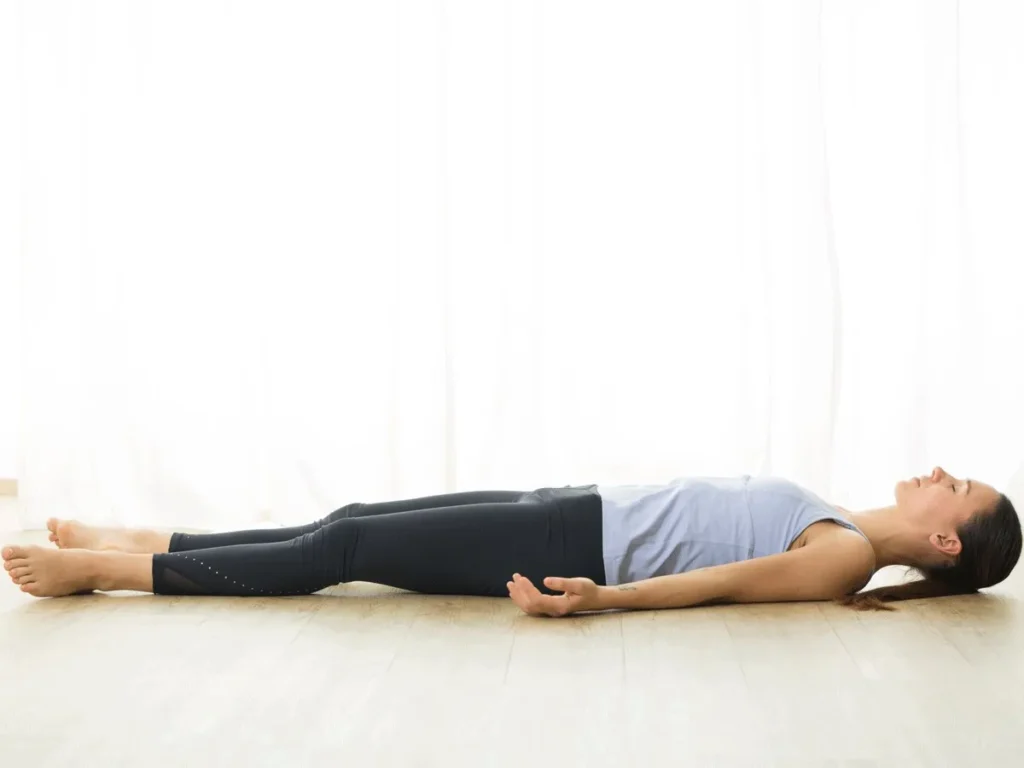
Corpse pose provides deep relaxation that helps reduce migraine intensity. This yoga pose for migraine works by completely relaxing the body and mind.
In savasana, a person lies flat on their back with arms at their sides. Their palms face up and legs are slightly apart. The goal is to release all muscle tension.
Key elements of effective corpse pose:
- Keep the room cool and dark
- Use a blanket for warmth
- Focus on slow, deep breathing
- Release tension from head to toe
This pose should last 10-20 minutes for best results. Many yoga teachers recommend savasana as the most important pose for migraine relief. The complete stillness helps reset the nervous system.
Standing Forward Fold (Uttanasana) to Release Neck and Shoulder Tension
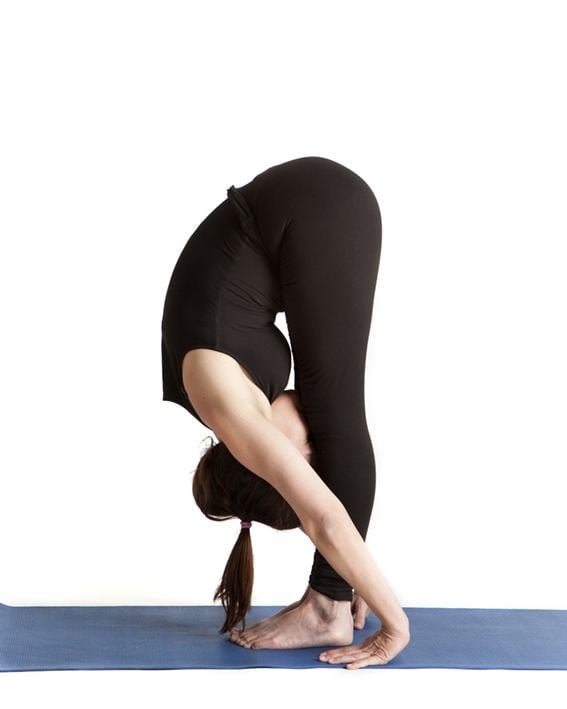
Standing forward fold helps increase blood flow to the head while releasing tight neck muscles. This yoga posture is especially good for tension headaches.
To do uttanasana, a person stands with feet hip-width apart. They slowly fold forward from the hips, letting their arms hang down. The head should hang heavy.
Modifications for headache relief:
- Bend knees slightly to reduce strain
- Rest forearms on a chair or block
- Hold opposite elbows and sway gently
- Keep the fold for 1-2 minutes
This pose should feel gentle, not forced. People with severe migraines should avoid this pose during an attack. The increased blood flow might worsen symptoms temporarily.
Legs-Up-the-Wall Pose (Viparita Karani) for Calming the Nervous System
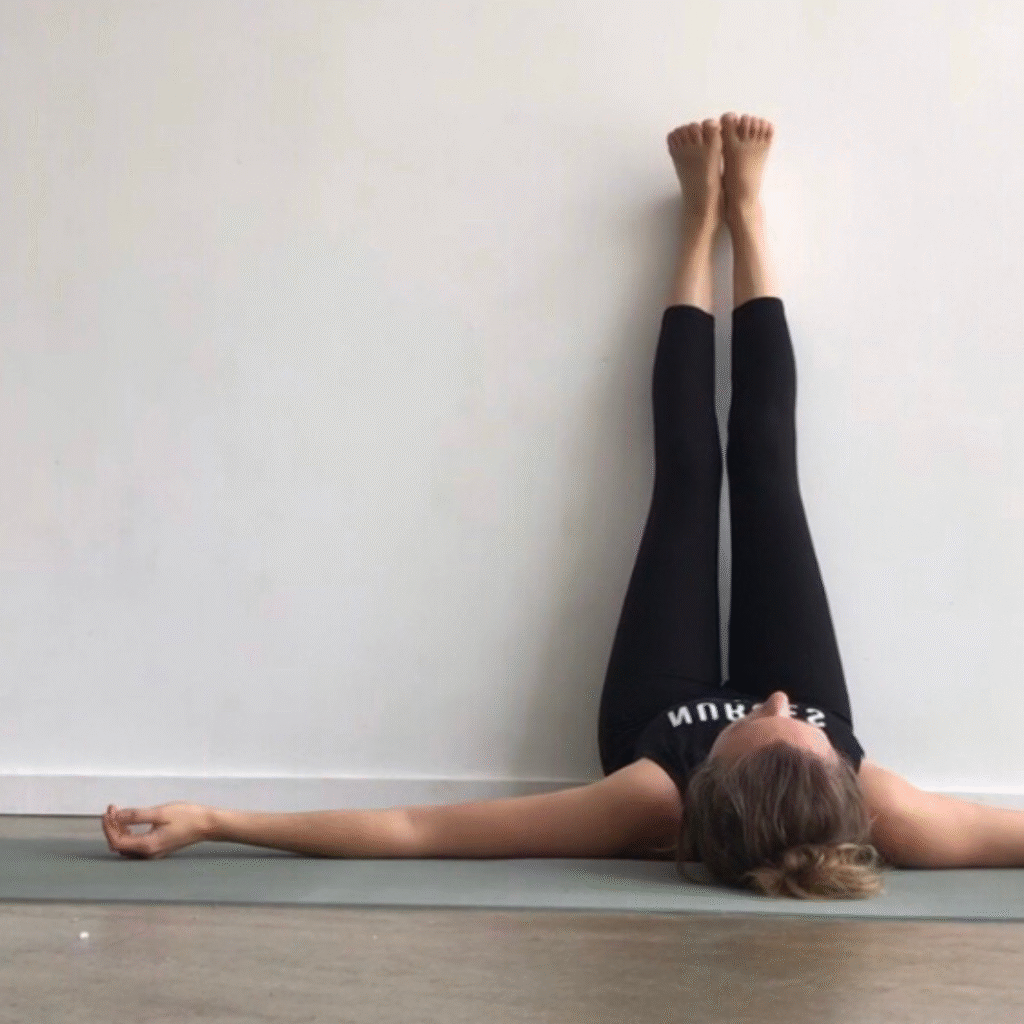
Legs-up-the-wall pose is excellent for migraine relief because it calms the nervous system. This gentle inversion helps reduce stress without straining the neck.
For viparita karani, a person lies on their back near a wall. They extend their legs up the wall while keeping their torso on the floor. Arms rest at their sides.
Setup tips for comfort:
- Place a pillow under the lower back
- Use an eye pillow to block light
- Keep legs relaxed against the wall
- Stay in pose for 10-15 minutes
This yoga pose works well during migraine attacks. The gentle inversion helps blood flow while the supported position requires no effort. Many people find this pose more restful than lying flat.
Spinal Twist (Supta Matsyendrasana) for Stress Relief
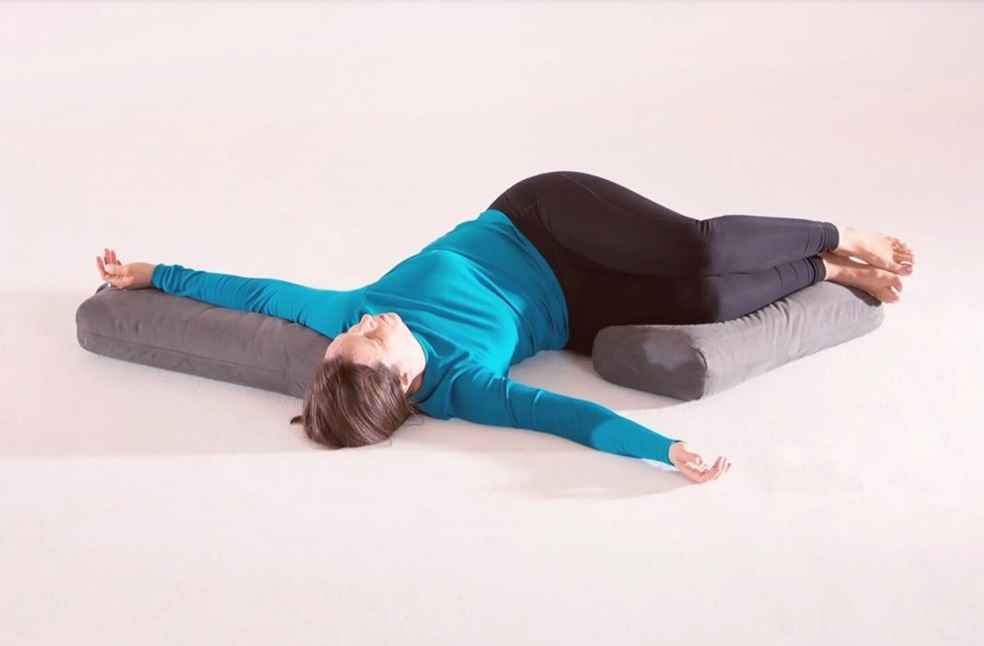
Gentle spinal twists help release tension in the back and neck that contributes to headaches. Supta matsyendrasana is a lying twist that provides relief without strain.
To practice this pose, a person lies on their back and draws one knee to their chest. They then cross that knee over to the opposite side while keeping both shoulders on the ground.
Important safety notes:
- Move slowly into the twist
- Don’t force the rotation
- Hold each side for 2-3 minutes
- Keep the neck in a comfortable position
This yoga posture helps release stress stored in the spine. The gentle movement improves circulation and reduces muscle tension. People should avoid deep twisting during severe migraines.

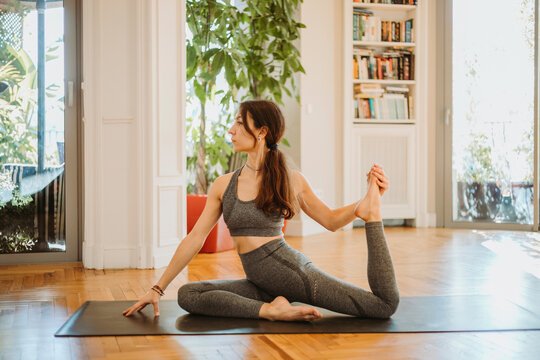
Leave a Reply